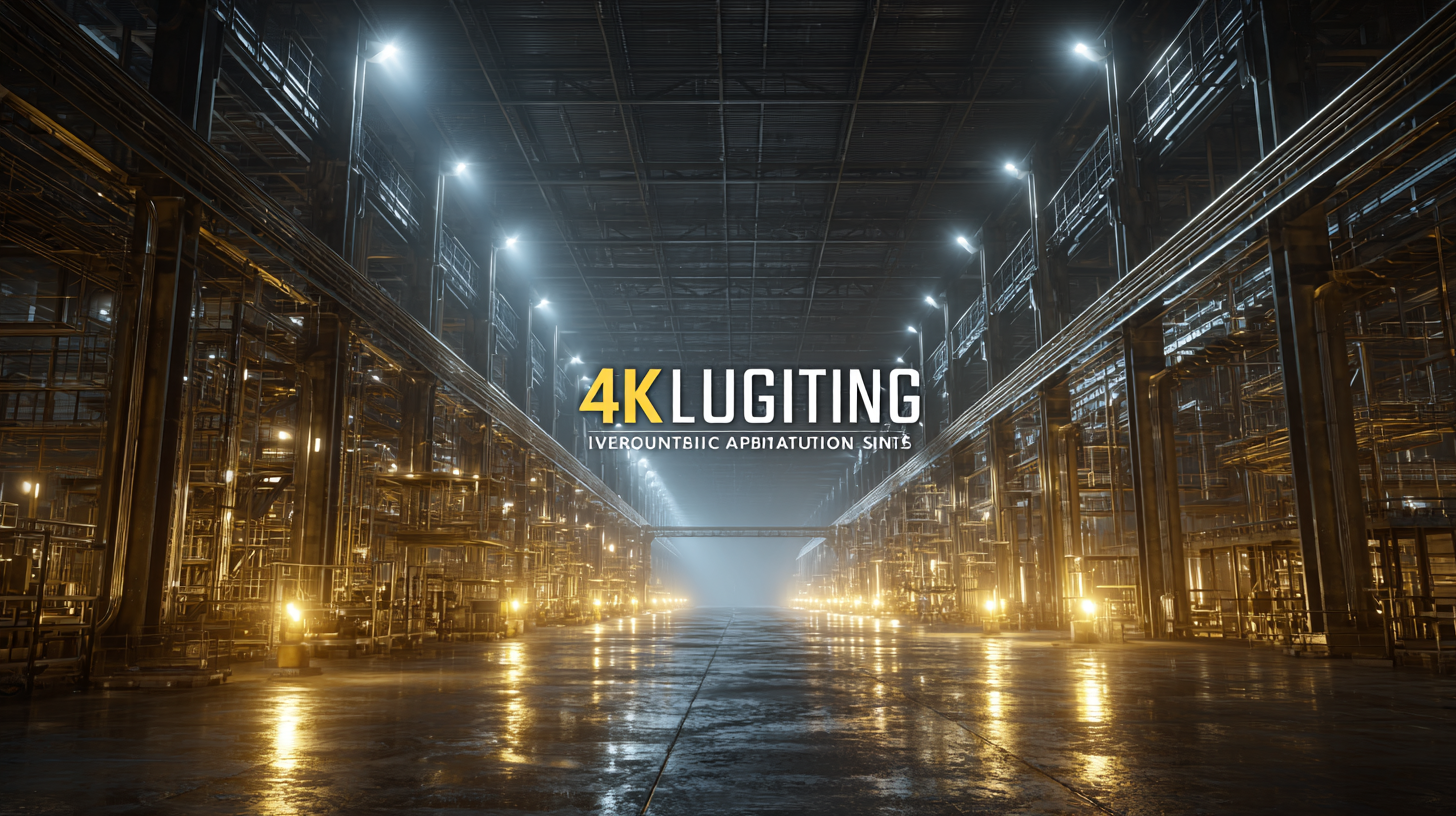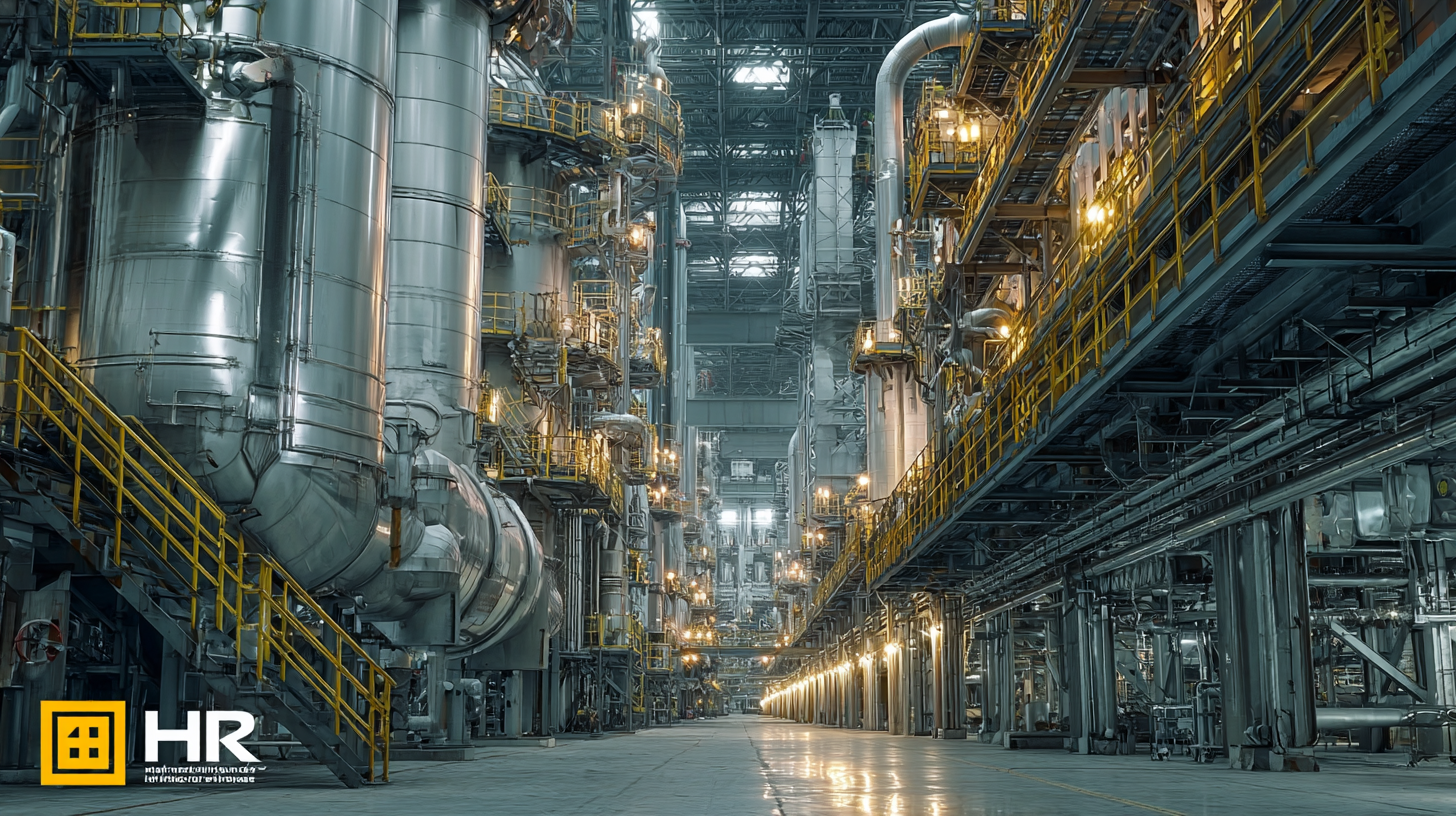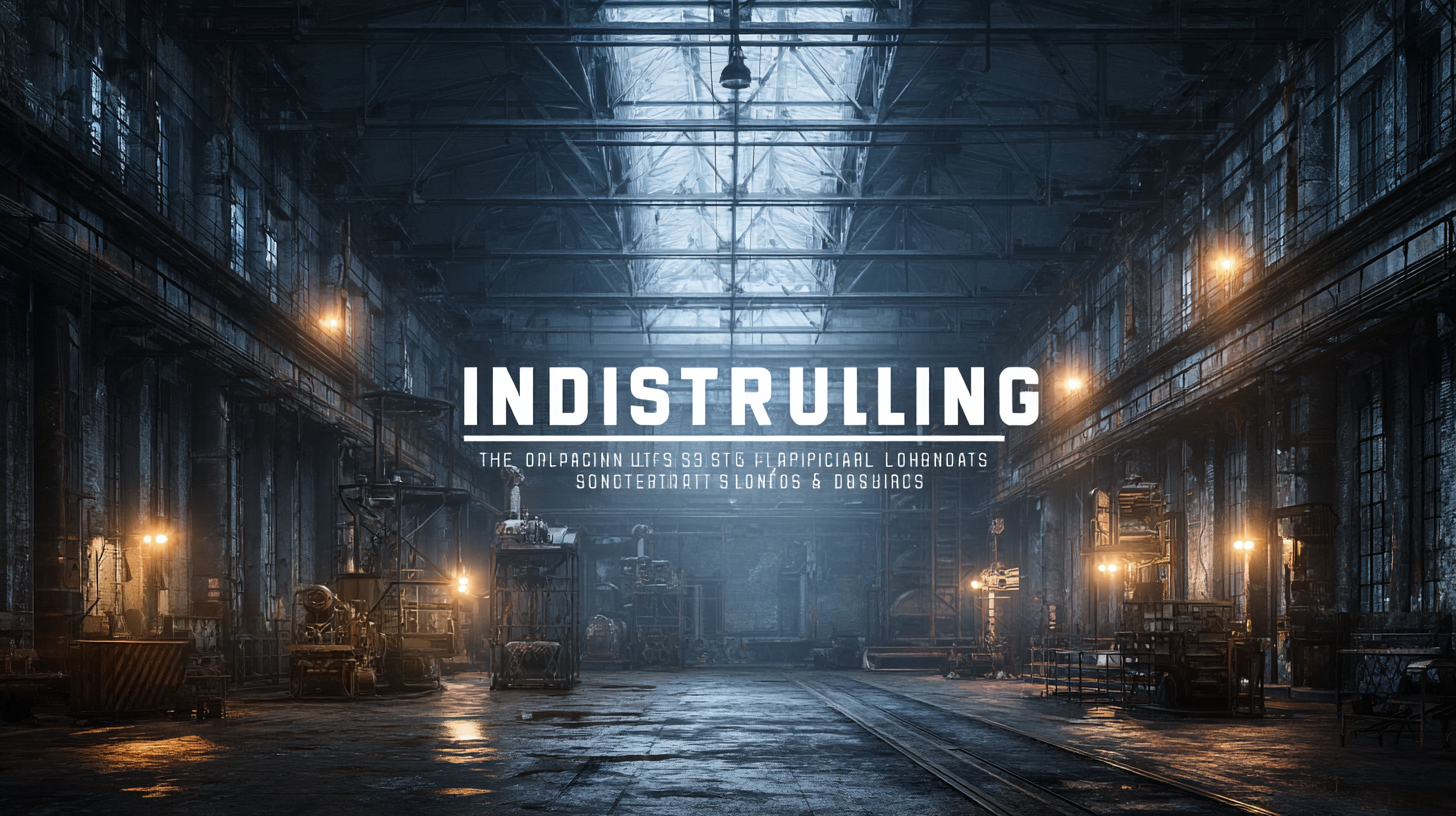Innovative Applications of Best Industrial Lighting in Various Sectors
In the ever-evolving landscape of industrial innovation, the role of effective Industrial Lighting has reached new heights, transforming not only the efficiency of operations but also enhancing safety and productivity across various sectors. According to a report by the Illuminating Engineering Society, proper lighting can increase workplace productivity by up to 20%, while simultaneously reducing the risk of accidents and injuries. The integration of advanced lighting technologies, such as LED systems and smart lighting solutions, is redefining workspace environments, contributing to energy savings of 30% or more, as highlighted in a study by the U.S. Department of Energy. This blog will explore the innovative applications of best industrial lighting in key sectors—including manufacturing, logistics, and healthcare—demonstrating how these advancements not only illuminate physical spaces but also pave the way for smarter, safer, and more sustainable industry practices.

Understanding the Importance of Industrial Lighting in Different Sectors
Industrial lighting plays a crucial role across various sectors, influencing both safety and productivity. According to a report by the National Institute for Occupational Safety and Health (NIOSH), effective workplace lighting can reduce the likelihood of accidents by up to 30%. This is particularly paramount in manufacturing, where poor illumination can lead to errors and workplace hazards, affecting not only output but also employee well-being. As industries shift towards more automated and technology-driven processes, the demand for advanced lighting solutions that enhance visibility, efficiency, and ergonomics has grown significantly.
Moreover, the healthcare sector is also experiencing the transformative impact of innovative industrial lighting. Studies indicate that optimal lighting can improve patient recovery times and reduce medical errors, with the Lighting Research Center estimating that well-designed lighting can increase alertness and decrease the rate of hospital-acquired infections. In the agricultural sector, specialized grow lights are being utilized to improve crop yield and quality, demonstrating that the right industrial lighting can significantly enhance operational outcomes across varied industries. As sectors continue to evolve, the importance of integrating high-quality industrial lighting solutions cannot be overstated, highlighting its impact on efficiency and safety.
Exploring Energy-Efficient Lighting Solutions for Manufacturing Facilities
In today's manufacturing facilities, energy-efficient lighting solutions play a pivotal role in enhancing productivity while minimizing operational costs. Choosing the right lighting system can significantly impact both the work environment and energy consumption. LED lighting, for instance, stands out as a superior option due to its long lifespan and reduced energy use when compared to traditional incandescent bulbs. By implementing smart lighting controls, manufacturers can further optimize their energy efficiency, automatically adjusting brightness based on the time of day or occupancy levels.
Tip: Regularly assess your lighting needs and consider integrating natural light where possible. Skylights or large windows not only improve morale among workers but also decrease reliance on artificial lighting, leading to significant energy savings.
Moreover, the use of motion sensors and dimmers in manufacturing spaces can enhance energy efficiency even further. These technologies allow lighting to be turned off or dimmed during times when the area is not in use, reducing waste. For facilities looking to upgrade, it’s essential to evaluate all potential lighting solutions and their return on investment to ensure sustainable practices that contribute to overall energy conservation.
Tip: Conduct an audit of your current lighting system to identify areas for improvement. This can help pinpoint specific needs and ensure your facility uses the most efficient and effective lighting solutions tailored to your operations.
Innovative Applications of Best Industrial Lighting in Various Sectors - Exploring Energy-Efficient Lighting Solutions for Manufacturing Facilities
| Sector | Lighting Technology | Energy Savings (%) | Lifespan (Hours) | Applications |
|---|---|---|---|---|
| Automotive Manufacturing | LED High Bay Lights | 60% | 50,000 | Assembly Lines, Warehousing |
| Food Processing | IP65 LED Panel Lights | 50% | 40,000 | Production Floors, Cold Storage |
| Electronics Manufacturing | T5 Fluorescent Lights | 30% | 24,000 | Clean Rooms, Assembly Stations |
| Textile Industry | LED Tube Lights | 55% | 30,000 | Weaving, Dyeing |
| Pharmaceuticals | Smart Lighting Systems | 45% | 50,000 | Production Lines, Laboratories |
Enhancing Safety and Productivity with Innovative Warehouse Lighting
In the realm of industrial applications, innovative lighting solutions play a vital role in enhancing both safety and productivity, particularly in settings like warehouses.
A recent initiative at a local factory highlights the importance of effective lighting in improving operational efficiency. By implementing state-of-the-art warehouse lighting, the factory has seen not only a significant boost in productivity but also a noticeable enhancement in safety for its workers. Proper illumination reduces the risk of accidents, allowing employees to navigate the workspace with greater confidence and precision.
Moreover, the integration of intelligent lighting systems that adapt to various activities in the warehouse further elevates working conditions. These systems can automatically adjust brightness levels based on the time of day or specific tasks being carried out, thereby ensuring optimal lighting at all times. As industries continue to evolve, embracing innovative lighting solutions is essential for fostering an environment where both safety and productivity thrive, ultimately leading to better outcomes and a more engaged workforce.
Implementing Smart Lighting Systems for Healthcare Environments
 The integration of smart lighting systems in healthcare environments has become a pivotal trend, enhancing both patient outcomes and operational efficiency. According to a report by the International Association of Lighting Designers (IALD), hospitals equipped with advanced lighting solutions have seen a significant reduction in patient anxiety levels, with studies showing a 23% decrease in stress-related incidents due to optimal lighting conditions. This demonstrates the profound effect that carefully designed lighting can have on the psychological well-being of patients.
The integration of smart lighting systems in healthcare environments has become a pivotal trend, enhancing both patient outcomes and operational efficiency. According to a report by the International Association of Lighting Designers (IALD), hospitals equipped with advanced lighting solutions have seen a significant reduction in patient anxiety levels, with studies showing a 23% decrease in stress-related incidents due to optimal lighting conditions. This demonstrates the profound effect that carefully designed lighting can have on the psychological well-being of patients.
Moreover, energy efficiency remains a critical goal in the healthcare sector. The U.S. Department of Energy reports that smart lighting systems can reduce energy consumption by up to 50% in healthcare facilities, leading to substantial cost savings. By utilizing sensors and automated controls, these systems adjust in real-time to the needs of different areas, ensuring that energy is not wasted in unoccupied spaces. This eco-friendly approach not only benefits the institution’s bottom line but also contributes to broader sustainability efforts within the healthcare industry. The adoption of smart lighting solutions is ultimately transforming healthcare environments into more responsive, efficient, and healing spaces.
Creative Uses of LED Technology in Retail and Hospitality Industries
In today’s competitive retail and hospitality landscapes, innovative applications of LED technology have revolutionized how businesses engage customers and create memorable experiences. The integration of advanced lighting solutions not only enhances aesthetics but also contributes to operational efficiency. For instance, hotels are increasingly adopting tailored lighting designs that adjust automatically, creating the perfect ambiance for different times of day or specific events. This trend, exemplified by the innovative concepts seen in new hotel developments, highlights LED's role in enhancing guest experiences.
Tips for implementing LED technology effectively include focusing on energy efficiency and versatility. Businesses should consider utilizing dimmable LED fixtures that allow for quick adjustments in brightness to suit various settings. Moreover, integrating smart lighting systems can optimize energy use by automating schedules based on occupancy levels. Retailers can also leverage dynamic lighting to highlight products through visual storytelling, drawing customers deeper into their shopping experience.
Another key aspect is the adaptability of LED designs. Creating inviting pathways with well-structured lighting can greatly improve customer flow, making it easier for guests to navigate. As the market evolves, staying informed about the latest advancements in LED technology can help retail and hospitality sectors harness the full potential of these solutions to remain competitive.

